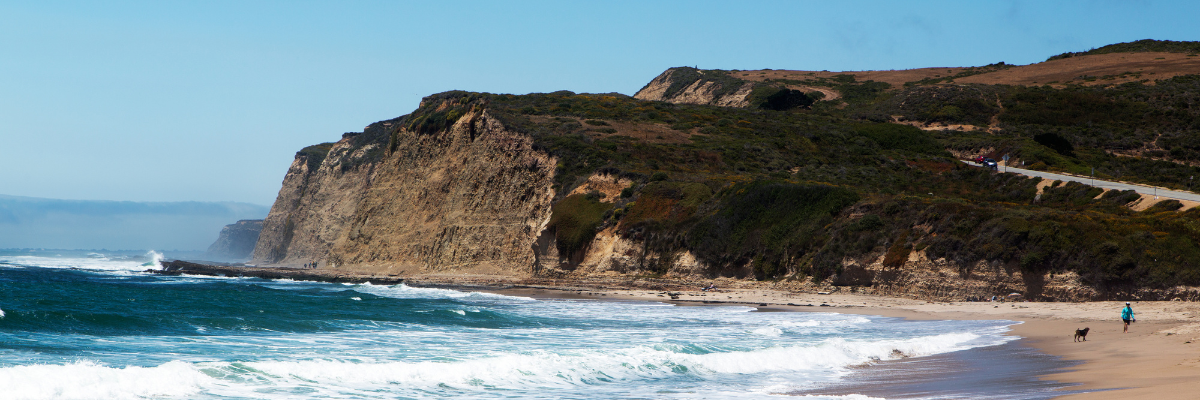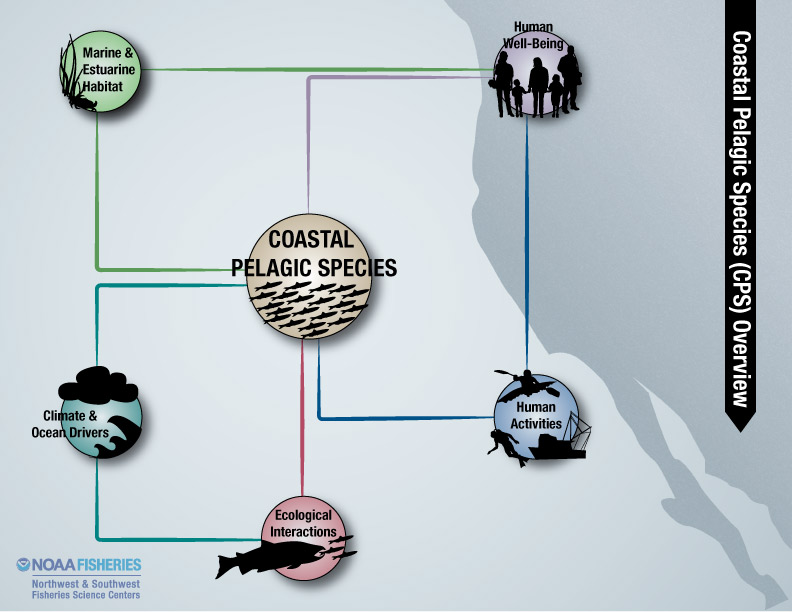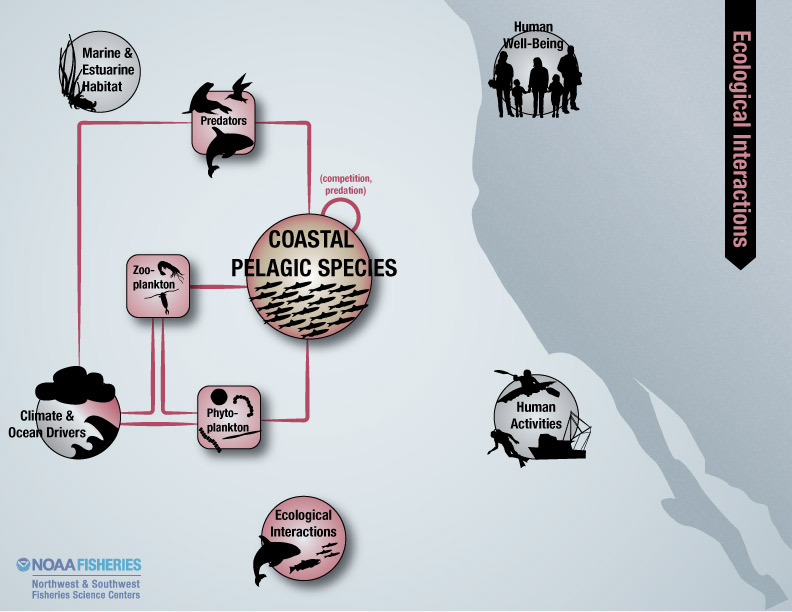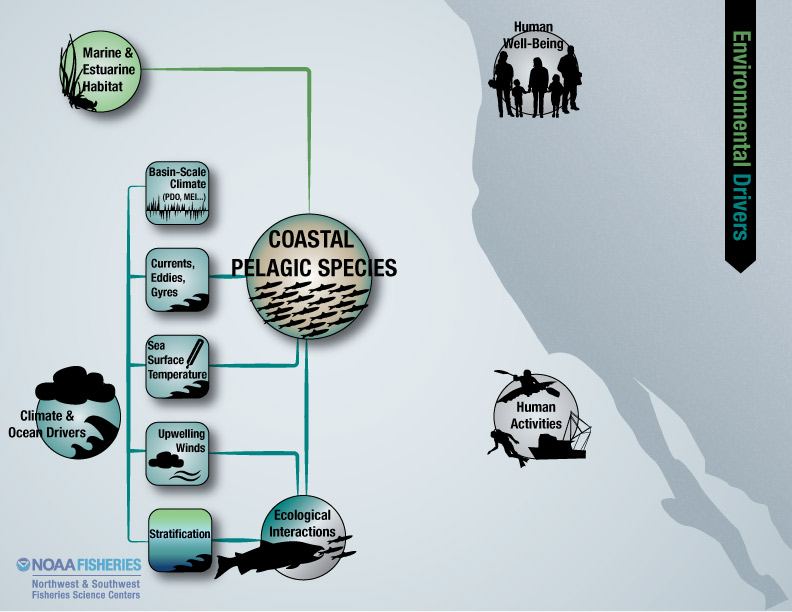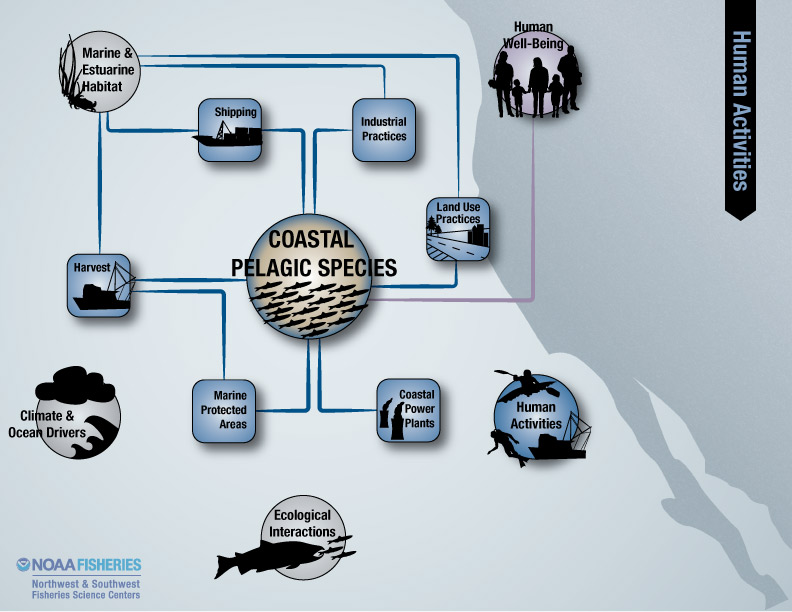Coastal pelagic or forage species, such as anchovy, sardine, herring, mackerel, squid and krill, feed on plankton for a portion of their life cycle and form dense schools or aggregations in pelagic habitats of the California Current ecosystem.
At times vastly abundant, these species are often the principal means of transferring production from lower levels of the food web. They not only support important commercial fisheries themselves, but also other higher trophic-level species that are commercially exploited and/or legally protected.
The coastal pelagic species section is currently undergoing a fundamental transformation. Indicator selection and status and trend assessments are a work in progress; please standby for updates.
The primary indicators of coastal pelagic species' population abundance will likely rely on stock assessments of key species, whereas indicators of pelagic forage availability are encompassed under the Ecological Integrity section.
